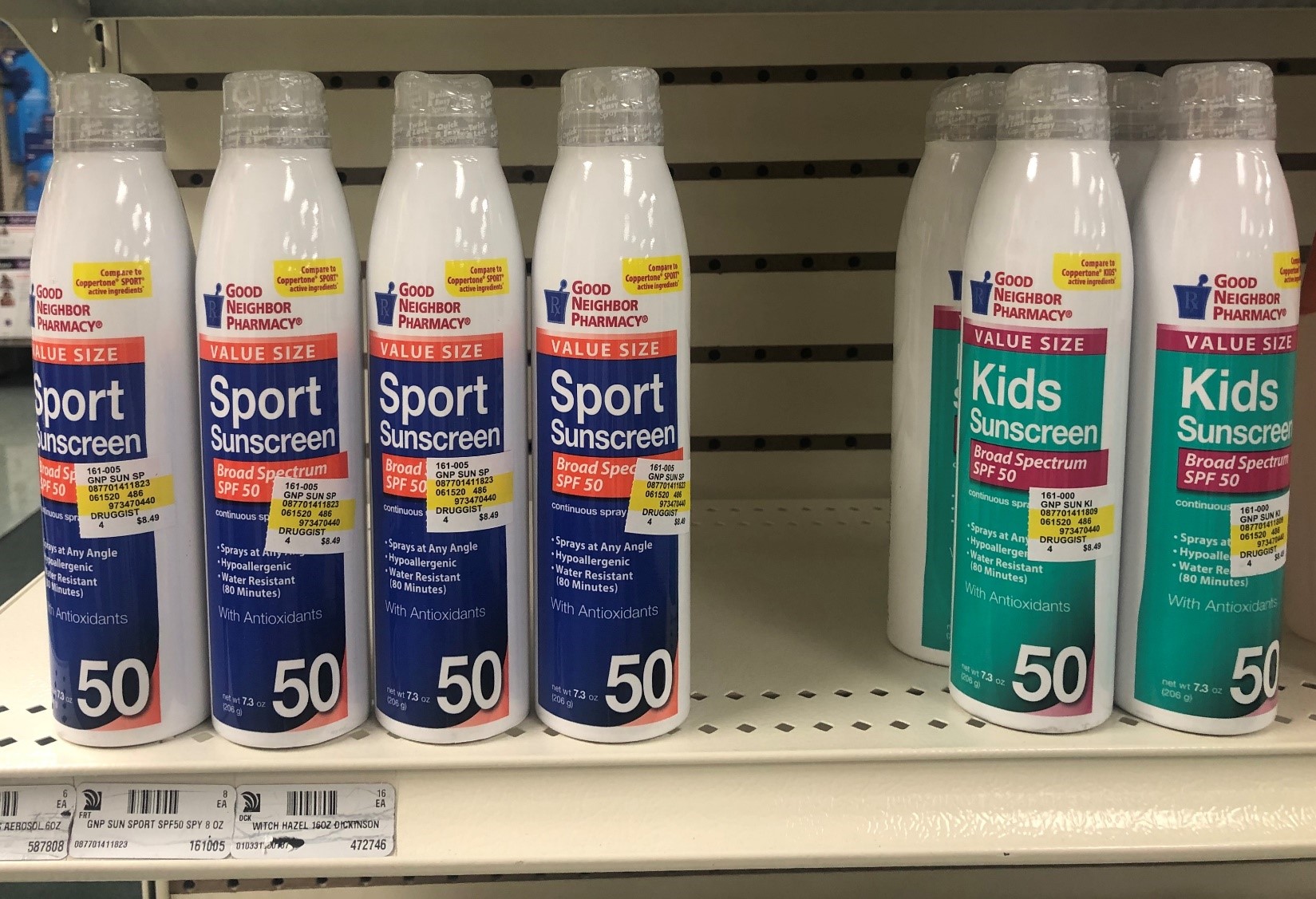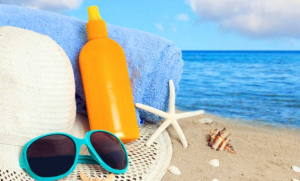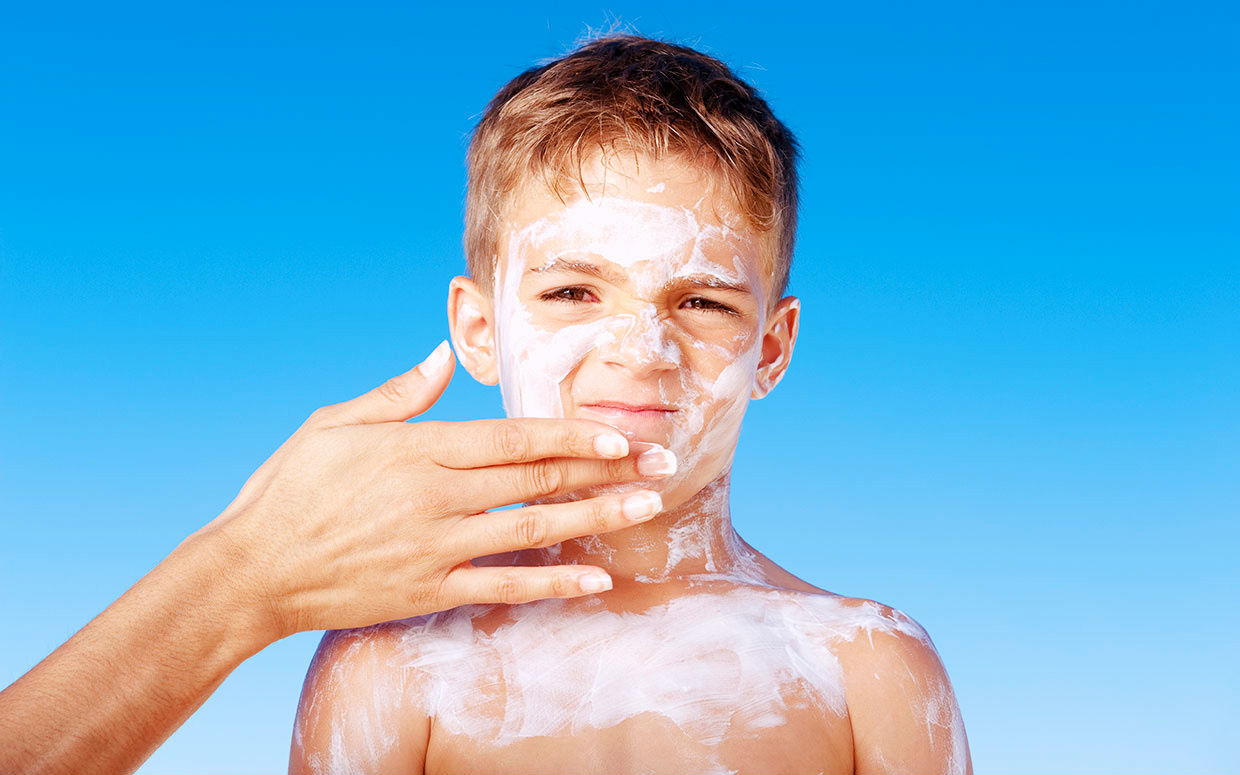Posts Tagged ‘sunscreen’
Staying Safe While Enjoying Summer. By Our Student Pharmacist, Stephanie Brokaw.
Precautions to Take During the Ongoing Covid-19 Pandemic:
As various businesses and recreational facilities begin and continue to open as we approach summer, it is important to remember that there are still new cases of COVID-19 and hospitalizations occurring related to the disease. Regardless of what activities you engage in this summer, it is important to keep in mind various safety tips needed to keep yourself and your families safe.
Some of these safety recommendations by the Centers for Disease Control and Prevention (CDC) include:
- Continue to practice social distancing by staying at least 6 feet apart from people you do not live with.
- Use facial coverings when possible, especially when maintaining 6 feet distances from other individuals may be difficult.
- When visiting public spaces like restaurants, call ahead to make a reservation (when applicable) to avoid long wait times and increasing your exposure to other people who may be asymptomatic carriers of COVID-19.
- If you experience symptoms of COVID-19, which include fever, cough, shortness of breath, or sore throat, avoid public places and public transportation.
- Utilize services such as online ordering, delivery, and curbside pick-up for essential items or ask someone outside of your household who is not experiencing symptoms to obtain essential items for you and drop them off on your doorstep.
- Wash your hands often especially after coughing and sneezing.
- Clean high-touch surfaces daily.
- It is safe to return to public spaces if you have been three days without a fever and symptoms have improved and ten days have passed since symptoms first appeared.
Pool Safety:
Some tips by the CDC specific to staying safe from COVID-19 in public swimming pools include:
- Wash your hands before entering the facility and often during your visit.
- Use facial coverings when possible (but do NOT use them while in the water, as it is difficult to breath through them when they are wet).
- Although it has been shown COVID-19 cannot be spread through water, maintain a 6-foot distance from those in pools with whom you do not live.
Do not forget about other pool safety tips such as maintaining adequate hydration and protecting yourself from harmful UV radiation.
Ways to protect yourself from UV radiation include:
- Cover your skin with clothing when possible. Darker colors may offer more UV protection than lighter colors.
- When you cannot cover areas of the skin, use broad spectrum sunscreen of SPF 15 or higher. Reapply sunscreen every two hours or sooner if swimming or sweating. Some makeup and lip balms may also contain sun protective properties.
- Wear a wide-brimmed hat that shades your face, ears, and back of neck. Darker colored hats may offer more protection. Avoid straw hats as they have holes that can permit sunlight to penetrate.
- Wear sunglasses that block both UVA and UVB rays.
Outdoor Safety:
Physical activity is still very important to engage in despite the pandemic because of the positive effects associated with physical and mental health.
Some tips by the CDC specific for staying safe in parks and other outdoor recreational facilities include:
- Visit parks close to your home to cut down on any unnecessary travel breaks which could put you at risk of encountering facilities or people who may be infected with COVID-19.
- Before you leave, check if the park you are planning to visit has restroom facilities open. Regardless, use the restroom at your home before traveling to decrease contact with surfaces in public places. Carry hand sanitizer and disinfecting wipes into these public facilities whenever possible.
In addition to the sun protection methods above, when visiting outdoor recreational facilities, such as parks, it is important to protect yourself against bugs that can transmit disease such as mosquitos and ticks.
Ways to protect yourself include:
- Cover your skin as much as possible.
- Use an EPA-approved insect repellant.
- Pre-treat clothing with permethrin.
Your community pharmacist is a great resource for more information regarding safety against COVID-19, UV radiation, and protection from mosquitos and ticks. Stop by one of our locations for more information and assistance in over-the-counter (OTC) product selection for your upcoming activities.
References:
https://www.cdc.gov/coronavirus/2019-nCoV/index.html
Photo references:
https://www.colorado.gov/pacific/cssrc/news/zika-virus-resources-and-info-cdc
Pale is the New Tan! Protecting Your Skin While Having Fun in the Sun. By Our June Student Pharmacist, Brittany Roy.
After a long and frigid winter, it is exciting to finally see some sunshine! But before you start shedding those layers and heading outdoors, it is important to know how to protect your skin.
There are two main types of harmful radiation that come from the sun: UVA and UVB rays. Both types of radiation can cause damage and aging of the skin and can eventually lead to skin cancer.
According to the American Academy of Dermatology, about one in five Americans will develop skin cancer at some point during their lifetime. Of the different types of skin cancers, melanoma is of the greatest concern and accounts for about 75% of skin cancer-related deaths. What’s even scarier is that the incidence of melanoma has been continuously rising for at least the past 30 years.
The good news is that there are plenty of ways in which we can protect our skin from UV damage and help decrease our chances of developing skin cancer in the future. One of these ways is by using sunscreen.
When choosing a product, there are two things you should consider: the spectrum of coverage and the SPF.
Since both kinds of radiation can cause damage to the skin, you want to be sure to purchase a sunscreen with “broad coverage,” meaning that it protects against both UVA and UVB rays.
The other factor to consider is the SPF, which stands for “Sun Protection Factor.” The SPF doesn’t necessarily represent the amount of protection, per se. Rather, it represents the relative amount of time until skin damage. For example, someone using a sunscreen with an SPF of 15 will take 15 times longer to redden when out in the sun.
The American Academy of Dermatology recommends using a sunscreen with an SPF of at least 30 or higher in conjunction with other safe-sun practices. Sunscreen should be applied to all exposed parts of the body about 15 – 30 minutes prior to sun exposure and then reapplied every two hours while you are outdoors. And keep in mind—just because the sun is behind the clouds doesn’t mean its rays can’t reach you. Reapplication is important regardless of whether it is sunny or overcast.
Waterproof sunscreen or more frequent applications should also be considered when doing things like swimming or sweating since the sunscreen may wear off more easily in these situations. It is also important to note that an SPF over 50 doesn’t give much added protection and does NOT mean you should stay in the sun longer or use it less frequently!
Like I said before, sunscreen is just one skin protection tool and is not enough to protect you from getting burnt when used alone. There are several other things you can do to help limit your skin’s exposure to the sun:
- Limit the time you spend outside between the hours of 10am – 2pm. The sun’s rays are the most intense during this time.
- Try to wear clothing that protects exposed areas of skin, including wide brimmed hats and UV-blocking sunglasses.
- Seek shade when possible.
- Keep infants (especially <6 months old) out of the sun. In general, the use of sunscreen on an infant is not recommended.
- Avoid tanning beds and UV booths. Getting a “base tan” before vacation to reduce the risk of sunburn does not reduce the risk of melanoma! Any tan is a sign of skin damage.
Now get out there and enjoy the sunshine! But be smart about it!
References:
http://www.skincancer.org/prevention/uva-and-uvb/understanding-uva-and-uvb
http://www.fda.gov/ForConsumers/ConsumerUpdates/ucm309136.htm
Treating Sunburn. By Our Student Pharmacist, David Brokaw.
June is one of the most beautiful months of the year in Ohio, and, like most of us, I like to spend as much time as possible outside enjoying the weather. The downside is that every year, without fail, I innocently stay outside all afternoon on the first free sunny day, while totally forgetting that the sun is a giant ball of energy constantly radiating powerful UV light down to Earth. Somehow, being incarcerated indoors all winter long has this incredible amnestic effect on my memory of last year’s sunburn. So again, I learned the hard way about sunburn and the cosmetic appeal (and pain) that comes with a fantastic “farmer’s tan.”
Here are a few things I learned along the way:
Sunburn appears as painful, reddened skin with possible swelling, which is associated with increased blood flow. The worst part of the burn is usually delayed, appearing after 24-48 hours.
Mild sunburn is red, painful, warm to the touch, and may be accompanied by a low grade fever, dizziness, or a headache. The skin may peel after several days as new skin cells are produced from lower layers to regenerate the damaged layer of skin (epidermis).
Moderate sunburns, however, can lead to nausea, fever or chills, and blistering, which may require professional wound care.
Severe sunburns may lead to heat stroke, so patients with fever, confusion, weakness, or convulsions should seek medical attention immediately. Even some of the medications we take can make us burn faster, increasing our photosensitivity, so we should check with our pharmacists if we have a concern.
General treatment for sunburn should start with staying out of the sun and covering up with protective clothing when outside. Cool compresses or a cool bath can help relieve pain. To prevent drying of the skin, a skin cream or ointment can be used to trap moisture. Some choose an aloe vera product to help soothe the skin. Blisters should not be broken open, because they protect the skin underneath, nor should peeling skin be pulled off. Vitamin C plays a major role in wound healing and taking two grams daily could possibly help until the burn is healed.
To treat sunburn symptoms, time heals all wounds–in this case 3-6 days for mild and 2-3 weeks for moderate sunburns. But for pain, we have a couple of options. NSAIDs or non-steroidal anti-inflammatory drugs like ibuprofen (Advil, Motrin), naproxen (Aleve), and aspirin, are preferred to help with the redness and swelling especially in the first 24 hours after UV exposure. These drugs are taken differently from each other, so it is important to read the directions on the label for correct dosing and appropriateness for children. Some people cannot take NSAIDs, so Tylenol is an option there. Provided that you are not allergic, topical anesthetics (benzocaine, lidocaine) should only be used on intact skin (not blisters), and should only be used on small areas of skin, no more than 3-4 times a day.
What shouldn’t you use? Products with menthol or camphor, although they smell nice (think Vick’s VapoRub), should not be used because they can actually increase the pain and swelling. Ouch! Also, the use of honey as a home remedy for sunburn is not recommended by burn centers.
Next time I decide to enjoy time in the sun outside with friends, you’d better believe I will have my sunblock and a good pair of sunglasses with me!
[Source: Dlugosz CK. The Practioner’s Quick Reference to Nonprescription Drugs. Washington, D.C.: American Pharmacists Association. 2009. pp 30-41.]











